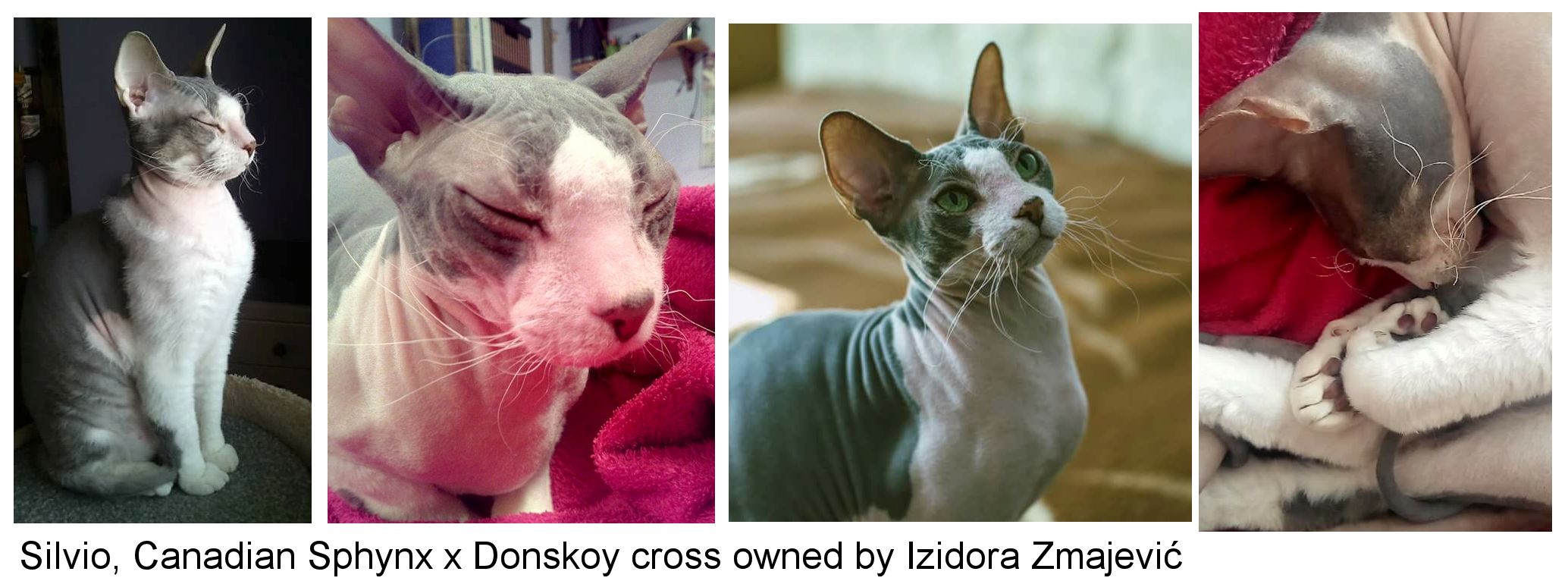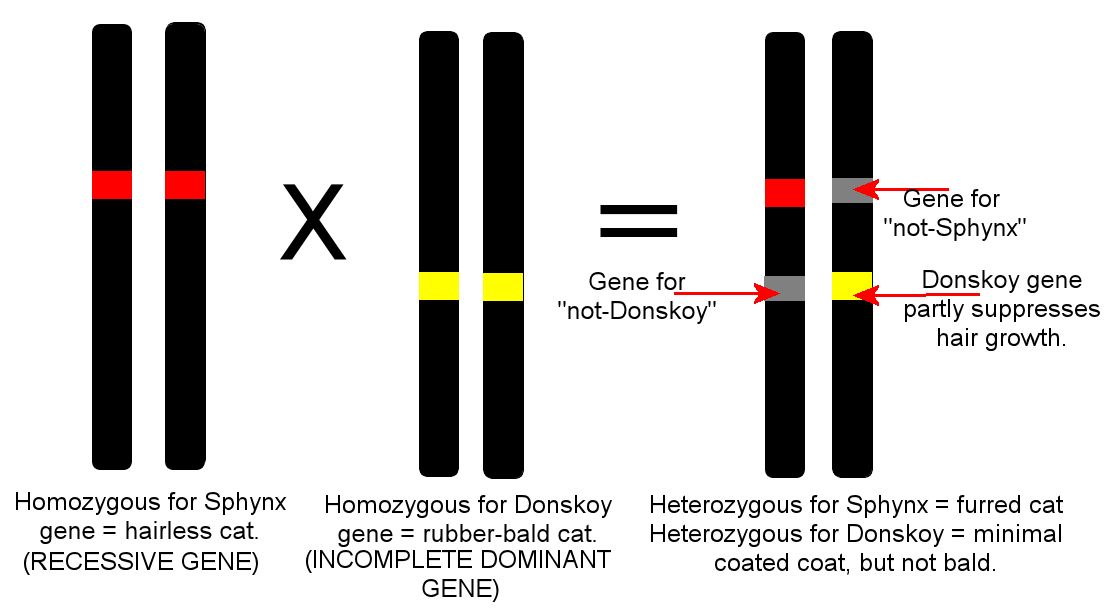
HAIRLESS GENE MISMATCH – CANADIAN SPHYNX X DONSKOY
Crossing two different types of hairless cat together is not advised because the different genes can interact in strange way. The offspring will not necessarily get a double dose of hairless genes and have skin as bald and smooth as rubber. Here’s why:
Izidora Zmajevic (January 2018) has a cat that is a cross of Canadian Sphynx x Donskoy acquired from a back yard breeder who did not follow advice that these breeds should not be mixed. That breeder had though that combining two hairless breeds would give hairless kittens, but that is not how it happened. All the kittens in all of the litters had hair when they were young and the hair disappeared slowly as they grew older, but the cats were never completely hairless. This can be seen in the photos of Silvio who still has hair on his paws and his face.
The Donskoy has a dominant hairless gene yet also comes in a few versions of coat - wiry, brush, wavy and rubber bald. Silvio’s mother is a rubber bald Donskoy. This Donskoy mother had 6 litters total. Some kittens were brush, flock velour, but none were entirely bald. All grew into adults with hairy legs, hairy faces and velour skin on the rest of the body.
The Canadian sphynx has a recessive gene for hairlessness. Silvio’s father is a Canadian Sphynx.

So how and why did the kittens get hair?
When a Donskoy is mated to a cat without the Donskoy gene (which includes a cat with a different hairless gene, whether it has hair or not), the absence of the dominant Donskoy gene results in hairy offspring. The Donskoy gene is described as dominant with incomplete penetrance; heterozygous Donskoys (which only have one copy of the gene) are brush-coated or wavy (flock). It is also normal for the hair coat to be shed as the cat grows up.
It is most likely that the rubber bald Donskoy mother was homozygous i.e. had 2 copies of the dominant gene and that is what made her completely bald. She could only pass on one copy of the Donskoy gene to her offspring and even though the gene is dominant, one copy on its own it is not enough to completely suppress fur growth, but it is enough to prevent a normal coat of fur.
Meanwhile, the other parent has a recessive gene. This only causes hairlessness if a cat inherits two copies of the gene. So a Canadian Sphynx mated to another kind of cat will only have one copy of the gene and will therefore have fur.
Genes come in pairs and the Donskoy and Sphynx genes are not at the same place on the chromosomes (they are not a pair), so a heterozygous Donskoy has one gene for hairless and one gene for normal coat - the normal coat is not completely suppressed by the single Donskoy gene. And a heterozygous Sphynx has one gene for Sphynx, but the corresponding gene inherited from the Donskoy is for normal fur.
Silvio is heterozygous for the recessive Sphynx gene (= grows fur) and is heterozygous for the dominant Donskoy gene (=grows a brush, wiry or wavy coat, some of which is shed later). Because the Sphynx gene is recessive we can ignore in this case (Silvio will not be bred) and concentrate on the dominant Donskoy gene – this is what is giving Silvio his partly furred coat.

ANOTHER MISMATCH – CORNISH AND DEVON REX
When rex-coated cats arose in these neighbouring counties a decade apart it was understandably assumed that these could be the same mutation. In the 1960s, the only way to find out was to mate the together. The resulting kittens had normal coats.
Both genes are recessive. This means a cat needs 2 copies of the same gene in order to have the curly coat. When a Devon Rex is mated to a Cornish Rex the offspring had one copy of each gene and had normal fur. Because the genes were at different locations on the chromosomes, the kittens inherited a recessive gene from each parent, but the corresponding gene from the other parent was for normal fur. This meant the kittens were normal furred but carried both genes. This was how breeders found out that there were two different mutations.